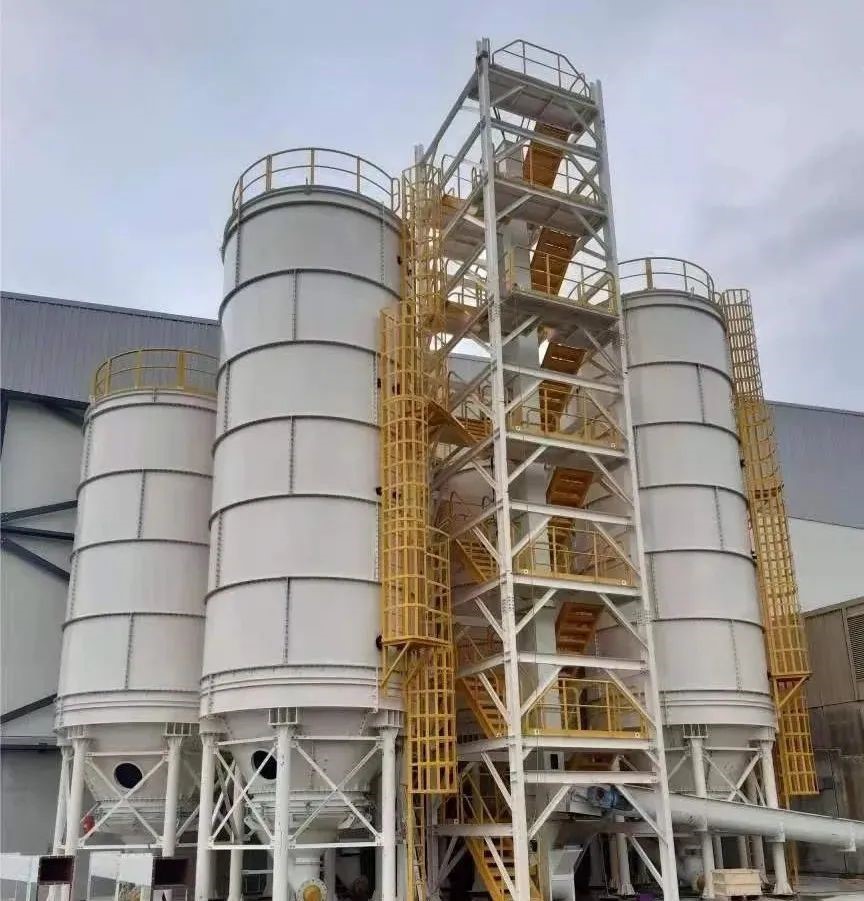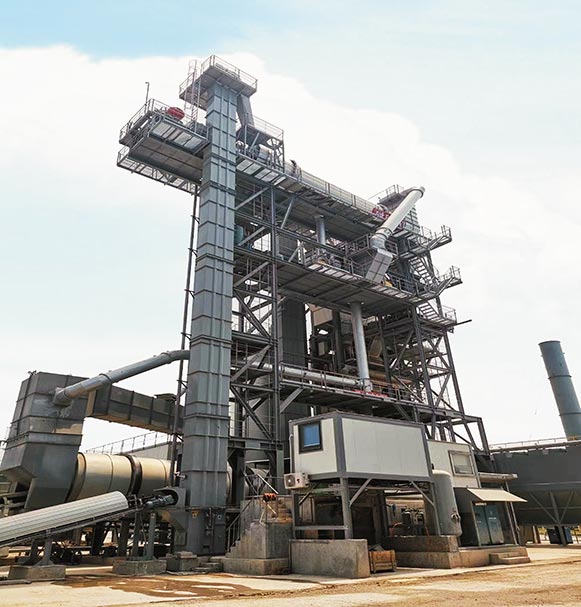头部邮箱+阿里巴巴
Welcome to Luwei official website!Tel:+86-592-7072928 E-mail: tina.ye@xmlwjx.com
How Steel Structures Are Revolutionizing the Architecture and Design
- Categories:News Center
- Author:
- Origin:
- Time of issue:2024-01-02
- Views:0
(Summary description)Discover the transformative impact of steel structures on modern architecture and design. From skyscrapers to bridges, steel has become the backbone of the built environment. Explore the versatility,
How Steel Structures Are Revolutionizing the Architecture and Design
(Summary description)Discover the transformative impact of steel structures on modern architecture and design. From skyscrapers to bridges, steel has become the backbone of the built environment. Explore the versatility,
- Categories:News Center
- Author:
- Origin:
- Time of issue:2024-01-02
- Views:0
1. The Rise of Steel Structures in Architecture and Design
2. The Advantages of Steel Structures
2.1 Strength and Durability
2.2 Versatility in Design
2.3 Sustainable and Eco-Friendly
2.4 Cost-Effectiveness
3. Steel Structures in Skyscrapers: Defying Gravity
3.1 The Evolution of Skyscrapers
3.2 Steel's Role in Tall Building Construction
3.3 Structural Stability and Safety
4. Steel Bridges: Connecting the World
4.1 The Importance of Bridges in Infrastructure
4.2 Advantages of Steel in Bridge Construction
4.3 Iconic Steel Bridges Around the World
5. Steel in Residential Architecture: Modern Elegance
5.1 Steel Framing in Residential Buildings
5.2 Steel's Contribution to Open Space and Natural Light
5.3 Steel's Impact on Interior Design
6. Steel in Commercial Architecture: Efficiency and Flexibility
6.1 Steel's Role in Commercial Building Construction
6.2 Design Freedom and Adaptability
6.3 Energy Efficiency and Green Building Standards
7. Frequently Asked Questions (FAQs)
7.1 How long do steel structures last?
7.2 Is steel a sustainable material?
7.3 Can steel structures withstand earthquakes?
7.4 Are steel structures cost-effective compared to other materials?
7.5 Can steel be used in historical building restoration?
8. Conclusion
1. The Rise of Steel Structures in Architecture and Design
Steel structures have revolutionized architecture and design, transforming the way we build and shape our cities. With its exceptional strength and versatility, steel has become the material of choice for architects and engineers worldwide. From the iconic skyscrapers that define city skylines to the elegant bridges that connect communities, steel structures have left an indelible mark on the built environment.
2. The Advantages of Steel Structures
2.1 Strength and Durability
Steel is renowned for its incredible strength and durability. It can withstand extreme weather conditions, seismic forces, and heavy loads, making it ideal for structures that need to stand the test of time. Unlike other materials, steel does not warp, rot, or shrink, ensuring the longevity of buildings and infrastructure.
2.2 Versatility in Design
One of the key advantages of steel structures is their versatility in design. Steel can be shaped and molded into various forms, allowing architects to create unique and innovative structures. From curved facades to intricate details, steel offers endless possibilities for architects to bring their visions to life.
2.3 Sustainable and Eco-Friendly
In an era of increasing environmental awareness, steel structures shine as a sustainable choice. Steel is 100% recyclable, reducing the demand for new raw materials and minimizing waste. Additionally, steel's energy-efficient properties contribute to reducing the carbon footprint of buildings, making it a preferred choice for green construction.
2.4 Cost-Effectiveness
Steel structures offer cost-effectiveness in both construction and maintenance. The use of prefabricated steel components speeds up the construction process, reducing labor costs and overall project duration. Furthermore, the durability and low maintenance requirements of steel structures translate into long-term cost savings for building owners.
3. Steel Structures in Skyscrapers: Defying Gravity
3.1 The Evolution of Skyscrapers
Skyscrapers have become synonymous with modern cityscapes, and steel has played a crucial role in their development. With advancements in engineering and construction techniques, architects embraced steel as the primary material for tall building construction. The ability of steel to support immense vertical loads has allowed buildings to reach unprecedented heights, defying gravity and pushing the boundaries of architectural achievement.
3.2 Steel's Role in Tall Building Construction
Steel's exceptional strength-to-weight ratio makes it an ideal choice for tall building construction. Its high tensile strength enables architects to design slender yet sturdy structures that maximize usable floor space. Additionally, steel's flexibility and ductility allow buildings to withstand wind forces and seismic events, ensuring the safety of occupants.
3.3 Structural Stability and Safety
Steel structures provide exceptional structural stability, which is crucial for skyscrapers to withstand various forces. Through rigorous engineering and design, steel frameworks distribute loads efficiently, preventing excessive deflections and ensuring the overall stability of the building. Moreover, steel's fire-resistant properties enhance the safety of occupants during emergencies.
4. Steel Bridges: Connecting the World
4.1 The Importance of Bridges in Infrastructure
Bridges play a vital role in connecting communities and enabling efficient transportation. Steel has become the material of choice for bridge construction due to its remarkable strength, durability, and versatility. From simple pedestrian bridges to grand suspension bridges, steel structures have become iconic landmarks around the world.
4.2 Advantages of Steel in Bridge Construction
Steel's high strength-to-weight ratio makes it an ideal material for bridge construction. By utilizing steel components, engineers can reduce the weight of the bridge, resulting in cost savings and improved structural efficiency. Additionally, steel's inherent flexibility allows bridges to withstand dynamic loads, such as heavy traffic and environmental forces.
4.3 Iconic Steel Bridges Around the World
Steel bridges have become architectural masterpieces, showcasing both engineering prowess and aesthetic appeal. From the Golden Gate Bridge in San Francisco to the Sydney Harbour Bridge in Australia, these structures captivate the imagination and serve as symbols of innovation and connectivity.
5. Steel in Residential Architecture: Modern Elegance
5.1 Steel Framing in Residential Buildings
Steel has made its way into residential architecture, offering a range of benefits for homeowners. Steel framing provides exceptional strength and stability, ensuring the safety and longevity of residential buildings. Moreover, steel's lightweight nature allows for faster construction, reducing project timelines and costs.
5.2 Steel's Contribution to Open Space and Natural Light
Steel structures allow for open floor plans and large spans, creating a sense of spaciousness and flexibility in residential design. The use of steel beams and columns eliminates the need for load-bearing walls, enabling architects to create open and airy living spaces flooded with natural light.
5.3 Steel's Impact on Interior Design
Steel elements in interior design add a touch of modern elegance and sophistication. From steel staircases and railings to sleek steel fixtures and fittings, these elements enhance the aesthetic appeal of residential spaces. Steel's adaptability also allows for custom designs and unique architectural features that showcase individual style.
6. Steel in Commercial Architecture: Efficiency and Flexibility
6.1 Steel's Role in Commercial Building Construction
Commercial buildings, such as offices, shopping centers, and warehouses, benefit greatly from the use of steel structures. Steel's strength and versatility provide architects and developers with the freedom to create functional and efficient spaces that meet the demands of modern businesses.
6.2 Design Freedom and Adaptability
Steel structures offer design freedom and adaptability, allowing commercial buildings to evolve and accommodate changing needs. With steel, architects can easily modify or expand spaces without compromising the structural integrity of the building. This flexibility ensures that commercial buildings can adapt to technological advancements and evolving business requirements.
6.3 Energy Efficiency and Green Building Standards
Steel structures contribute to energy efficiency and sustainability in commercial architecture. Steel's thermal properties help regulate temperatures, reducing the reliance on heating and cooling systems. Furthermore, steel's recyclability aligns with green building standards, promoting environmentally responsible construction practices.
7. Frequently Asked Questions (FAQs)
7.1 How long do steel structures last?
Steel structures have an impressive lifespan, often lasting over 50 years with proper maintenance and care. However, with advancements in corrosion-resistant coatings and maintenance practices, steel structures can continue to stand strong for centuries.
7.2 Is steel a sustainable material?
Yes, steel is a sustainable material. It is 100% recyclable and can be reused without losing its strength or quality. The recycling process requires less energy compared to the production of new steel, making it an environmentally friendly choice.
7.3 Can steel structures withstand earthquakes?
Steel structures are known for their ability to withstand seismic forces. The flexibility and ductility of steel allow buildings to absorb and distribute energy during earthquakes, minimizing damage and ensuring the safety of occupants.
7.4 Are steel structures cost-effective compared to other materials?
Yes, steel structures offer cost-effectiveness compared to other materials. The prefabrication process and ease of installation reduce labor costs and project timelines. Additionally, steel's durability and low maintenance requirements translate into long-term cost savings.
7.5 Can steel be used in historical building restoration?
Yes, steel can be used in historical building restoration. Steel elements can provide added strength and support to historical structures without compromising their architectural integrity. Steel's compatibility with other materials also makes it a suitable choice for restoration projects.
8. Conclusion
Steel structures have revolutionized the field of architecture and design, providing endless possibilities for creating iconic and innovative structures. From the towering skyscrapers that shape our cityscapes to the bridges that connect communities, steel's strength, versatility, and sustainability have made it the material of choice for the modern built environment. By embracing steel's transformative qualities, architects and engineers continue to push the boundaries of what is possible, shaping a future where both form and function flourish.
Scan the QR code to read on your phone
The Essential Role of Chain Type Bucket Elevators in Mining Operations
Key Benefits of Chain Type Bucket Elevators in Industrial Equipment
Enhancing Productivity with Modern Grain Storage Silo Solutions
Essential Information about Grain Storage Silos
Maximizing Space and Preserving Quality: Benefits of Grain Storage Silos
Unlocking the Potential of Grain Storage Silos: Key Information for Industrial Equipment Professionals

Scan and follow Lu Wei

Scan and follow Xiang Hao

Scan and follow Zhi Xiang
Xiamen Luwei Prefabricated
Steel Structure Co., Ltd Ltd.
Service Hotline:
+86 592-7072928 / +86 18150889219 (Tina Ye) (Overseas)
E-mail:tina.ye@xmlwjx.com
Registered address of the company:
Office Building 3rd Floor, No.608, Xinxia
South Road, Xinxu Town, Xiang'an District, Xiamen City
Factory Address:
E3 workshop, Factory 2nd Floor, No.608, Xinxia South Road, Xinxu Town, Xiang'an District, Xiamen City
Page Copyright: Xiamen Luwei Prefabricated Steel Structure Co., Ltd Ltd. 闽ICP备10205934号
Friendly Link: Alibaba







